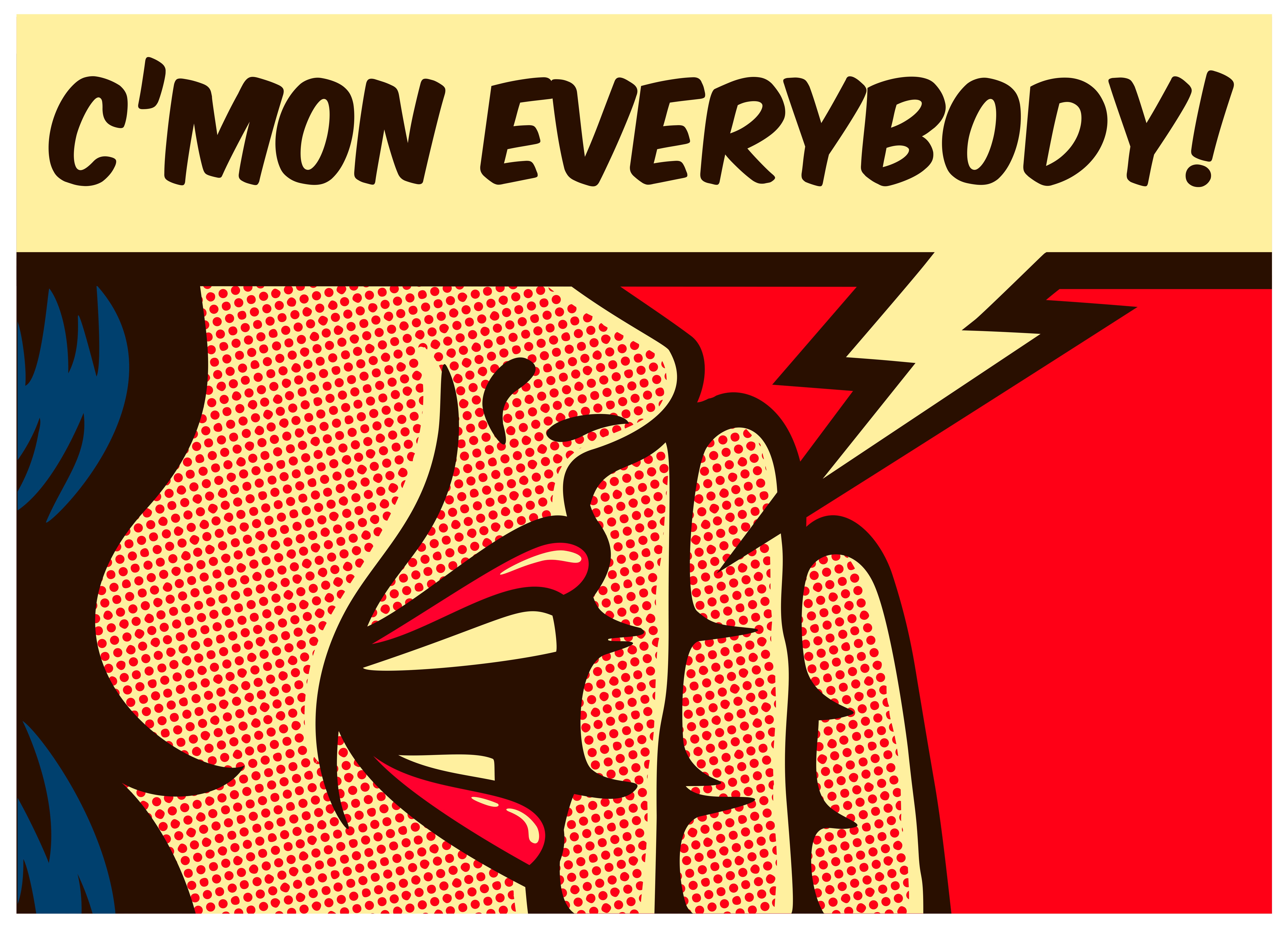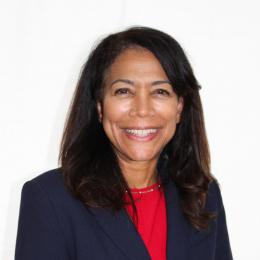Banner artwork by Seymont Studio / Shutterstock.com
Although many people have embraced diversity, equity, and inclusion (DEI) as an important social and corporate initiative, there remain detractors. Typically, the detractors express concerns through references to fairness, to fear of promoting the unqualified, or an overall desire to stay out of social issues. Often such detractors have the belief that the playing field is level, and that any lack of success is due to individual shortcomings. They may also rely on their personal lived experiences such as challenges they personally faced and overcame, like socioeconomic issues in their youth, as proof that no further attention to DEI is needed.
Typically, the detractors express concerns through references to fairness, to fear of promoting the unqualified, or an overall desire to stay out of social issues.
These feelings are very real and may present among first-level managers, who are the key to successful implementation of any human resources (HR) strategy on DEI. They also burden the C-suite, where a lack of enthusiasm will chill or thwart progress, leaving proponents of DEI feeling frustrated and even defeated.
The purpose of this article is not to debate the merit of those opinions but rather to strategize upon what in-house counsel can do to advance DEI when faced with co-workers who appear unengaged or resistant, using under-the-radar strategies. Stealth diversity can build a platform of acceptance for diversity strategies, including enhancing representation, without labeling them as DEI.
When support for DEI is lacking at the executive level
Consider using terms such as belonging and inclusion, which may create less resistance.
1. Watch your vocabulary.
The word, “diversity,” itself has become polarizing. Rightly or wrongly, it has been used to mean programming only for black, indigenous, and people of color (BIPOC). Instead, consider using terms such as belonging and inclusion, which may create less resistance. Belonging is a fundamental human need, and it stands to reason that when employees feel included and welcome, they can do their best work.
2. Focus on process enhancements that may root out inequities and can benefit all.
Many practices that enhance DEI are actually best practices. Implement them without labeling them as DEI practices. For example, when conducting a compensation analysis, review the salaries of all groups, without regard to whether there is concern for a legal claim. You might use a slightly different process (because of a different legal framework) for compensation reviews for dominant groups as a business practice, and only have the legal department review those who are part of groups who have experienced inequities, as a risk avoidance strategy. And, if there are unexplained differences in compensation, adjustments would be made to all. The end result is a compensation system that is widely accepted as fair.
3. Implement processes designed to combat implicit bias but don’t say this is the reason.
Implicit bias is real, but it is not necessary to convince the reluctant of this reality. Rather, proceed to the fix and redefine processes to prevent implicit bias from taking over. For example, have interviewers agree on the most important attributes candidates should have based on business need before conducting interviews. Each interviewer should rate the candidates independently before meeting to make the final selection. Require an explanation for candidates who aren’t selected and for those who made the final list, to reinforce fidelity to the agreed-upon process. Where possible, have more than one candidate from the under represented group on the final slate. According to a recent article in Harvard Business Review, this practice significantly increases the chances of an underrepresented individual being selected.

4. Restate qualifications to expand the mix of candidates deemed qualified.
Blunt the argument that unqualified candidates are being considered by more holistically defining what truly is needed to be successful in the role. This approach forces consideration of soft skills which are truly necessary to be successful but often do not appear on job requisitions. Addition of these skills may expand and diversify the mix of candidates considered qualified. For example, when selecting a manager, consider adding as a criterion: “proven ability to effectively manage diverse teams.” For more on this topic, please see our article, Redefine “Qualified” Candidates to Supercharge Your Team.”
5. Fix your criteria.
White men are often promoted (and hired) based on potential while underrepresented people need proven ability to be selected, according to Joan Williams, director, Center for WorkLife Law at Hastings in Bias Interrupted. So, if your organization resists DEI as contrary to a meritocracy, require all promotions be evidence-based based on proven ability.
Similarly, underrepresented employees are disproportionately evaluated based on personality while white men’s evaluations focus on accomplishments, per Williams in Bias Interrupted. Physically restructure the evaluation form to separate the assessment of personal attributes from the assessment of performance and measure all employees in both areas.
6. Adjust your job descriptions.
Job descriptions and postings may inadvertently contain language which can hamper your DEI efforts. For example, words such as “aggressive” and “competitive,” and overuse of superlatives (e.g., looking for an “expert”) may be less appealing to candidates who are more collaborative and less self-promoting by nature.
7. Consider a cultural audit of your practices.
Your corporate practices may reflect a set of cultural norms that may inadvertently favor employees who share those cultural values and disadvantage others. Consider an audit to identify those practices and make appropriate tweaks. For example, a promotion process that requires candidates to self-promote, which may be intuitive to employees who come from an individualistic culture, may disadvantage employees from a collectivist culture in which self-promotion is frowned upon and who expect that they will be recognized simply by working hard. For more information on the hidden impact of cultural norms on underrepresented groups, see our article entitled The Forgotten Piece of DEI: Cultural Intelligence.
8. Pick one underrepresented group to start.
First generation college educated employees face many of the same challenges as other underrepresented groups in navigating corporate America. Employee resource groups and sponsorship programs that target this population can be very helpful. There should be less resistance to implementing such programs because the beneficiaries are broadly diverse even though they may disproportionately benefit women or people of color.
9. Hire a star from an underrepresented group, overpaying if necessary.
Fill a high-profile position with a star for outsized impact: an individual from an underrepresented group with unquestionable talent and past success who is comfortable in navigating spaces and managing individuals to whom they are a novelty. It's a bonus if they have the kind of leadership abilities to bring others along and inherently believe in mentorship and sponsorship, though it’s not essential toward executing this strategy successfully. Often these employees become seen by less exposed colleagues as raceless, valued for their own merit. Think Serena Williams, Vera Wang, Oprah, Lin Manuel Miranda, Denzel Washington, or Colin Powell.

Their success can broaden the perspective of colleagues who’ve not been compelled to interact with people of this demographic as equals. Once exposed to such a talent who refutes any preconceived notions of ability, they may be more inclined to give others of this demographic an opportunity. Importantly, this star should be appropriately rewarded for the additional “ambassador” work they are taking on and provided other resources or support (such as a safe space to vent and strategize) in recognition of the extra burden they are being asked to bear.
10. Ask each executive to identify and lead a personal DEI passion project.
Under this approach, each leader selects a personal project to lead, defining diversity on their own terms. It is possible that a reluctant leader might select a project aimed at a less traditional group of underrepresented people, such as first-generation college graduates, veterans, or those with disabilities.These groups tend to be broadly diverse, thereby advancing the overall objectives. Moreover, by having each executive identify their project, you increase the likelihood of commitment and engagement, coupled with natural competition between leaders which can enhance the likelihood of success.
For those who are resisters at the manager level, your focus should be on reinforcing DEI as an ongoing corporate imperative, not a flash in the plan. Here, while the goal of DEI is specific and up front, the “stealth” strategies of building support are more generic because direct appeals to resisters tend not to work.
Dealing with resisters at the manager level
Emphasize the business benefits to be achieved from DEI programs, such as understanding and marketing to customers, increasing innovation and avoiding group think.
1. Lead with the business case.
Moral rationales such as, “It’s the right thing to do,” are unpersuasive to people whose core values differ. But most employees can support programs that enhance shareholder value or increase profits. Emphasize the business benefits to be achieved from DEI programs, such as understanding and marketing to customers, increasing innovation and avoiding group think. Appreciate that employees may ask, “What’s in it for me?” and frame the efforts as benefiting everyone.
2. Share your numbers.
Resistance to DEI initiatives can stem from a perception that certain groups have attained an unfair advantage, and there is often a fear that the dominant group is now disadvantaged. Your company’s demographics — the “numbers” likely belie that perception. Which is why sharing high-level demographics (e.g., individual contributors, managers, executives) by race and gender can help establish that underrepresentation is still a reality that needs to be addressed. Do not be overly concerned that the underrepresented groups will seize on this disclosure as proof of discrimination. The reality is many in such groups already believe there is underrepresentation, perhaps believing it is worse than it actually is. Disclosure plus action goes a long way to tamping down such claims.
3. Leverage your corporate values.
Where employees’ core values may differ, frame your programs in your company’s espoused values and clearly establish linkages between those values and DEI. This reinforces that DEI is a business imperative, in full alignment with the company, and not an external social posture.
4. Create a reverse mentoring program and label it as cultural awareness.
In a reverse mentoring program, leaders are the mentees. They are mentored by lower-level employees from a different demographic. These programs create a safe space to learn about each other’s cultures and communities. This can be an organic way to recruit more leaders to support DEI initiatives — through authentic relationships —without calling it a DEI program.
5. Repeat the message regularly.

Have leaders, especially white males, regularly espouse the benefits of DEI in meetings and communications. Encourage your leaders to share personal stories. This normalizes DEI and also reinforces that commitment to DEI is widely held, which may encourage resisters to suppress their disagreement. Over time, many resisters can be influenced by leaders they otherwise trust and admire. This is similar to the culture shift strategy used in the early days of harassment prevention.
6. Make it part of the performance review.
When DEI actions are part of work evaluations, it reinforces that DEI is not a "flavor of the month” which can be ignored, but that it is a core business strategy. Perhaps managers are rewarded for their ability to maximize the performance of all of their team. Morale surveys, 360 reviews, and skip-level meetings reinforce the message that managers are accountable for how their rank-and-file employees perceive they are treated by providing opportunity for subordinates to comment on the culture of their workplace and their manager’s treatment of them.
7. Maximize employee resource groups (ERG).
ERGs are common in DEI-leading companies. For companies starting their journey, they can be used in a stealth way. Specifically, they can provide opportunities for their members to demonstrate leadership, thereby increasing their skillset and reputation, at a point much earlier in their careers than what might happen organically in their departments. This is particularly powerful when the ERG has been structured around a mission of contributing to corporate goals, whether that be recruiting, corporate philanthropy, or marketing. Strategically reinforce the business-related contributions of the ERGs to promote the value of the experiences they provide their members. It’s even more effective when the executive sponsors for the ERGs are not from the demographic they serve.
8. Help your leaders.
Newly converted leaders often blunder in their enthusiasm to advance DEI. For example, they might issue a directive to fill a position with woman or another person considered to be from a “politically-correct” demographic. Such blunders create legal risk which can derail your whole effort and energize the detractors. Anticipate this fervent desire to make rapid progress. Recognize that it’s easier to tell someone what to do than to show them how to do it. Be prepared to provide your leaders with appropriate guidelines and training to channel this energy in an appropriate way.
DEI can be improved even in an atmosphere of apathy or hostility.
In an ideal world, DEI initiatives are enthusiastically endorsed by leaders and embraced by managers. But many workplaces do not have this advantage. However, with a few stealth strategies, DEI can be improved even in an atmosphere of apathy or hostility.
Note: The authors are grateful that they work for an organization where stealth tactics are not necessary as diversity is fully embraced as an important corporate value.
Disclaimer: The information in any resource in this website should not be construed as legal advice or as a legal opinion on specific facts, and should not be considered representing the views of its authors, its sponsors, and/or ACC. These resources are not intended as a definitive statement on the subject addressed. Rather, they are intended to serve as a tool providing practical guidance and references for the busy in-house practitioner and other readers.








